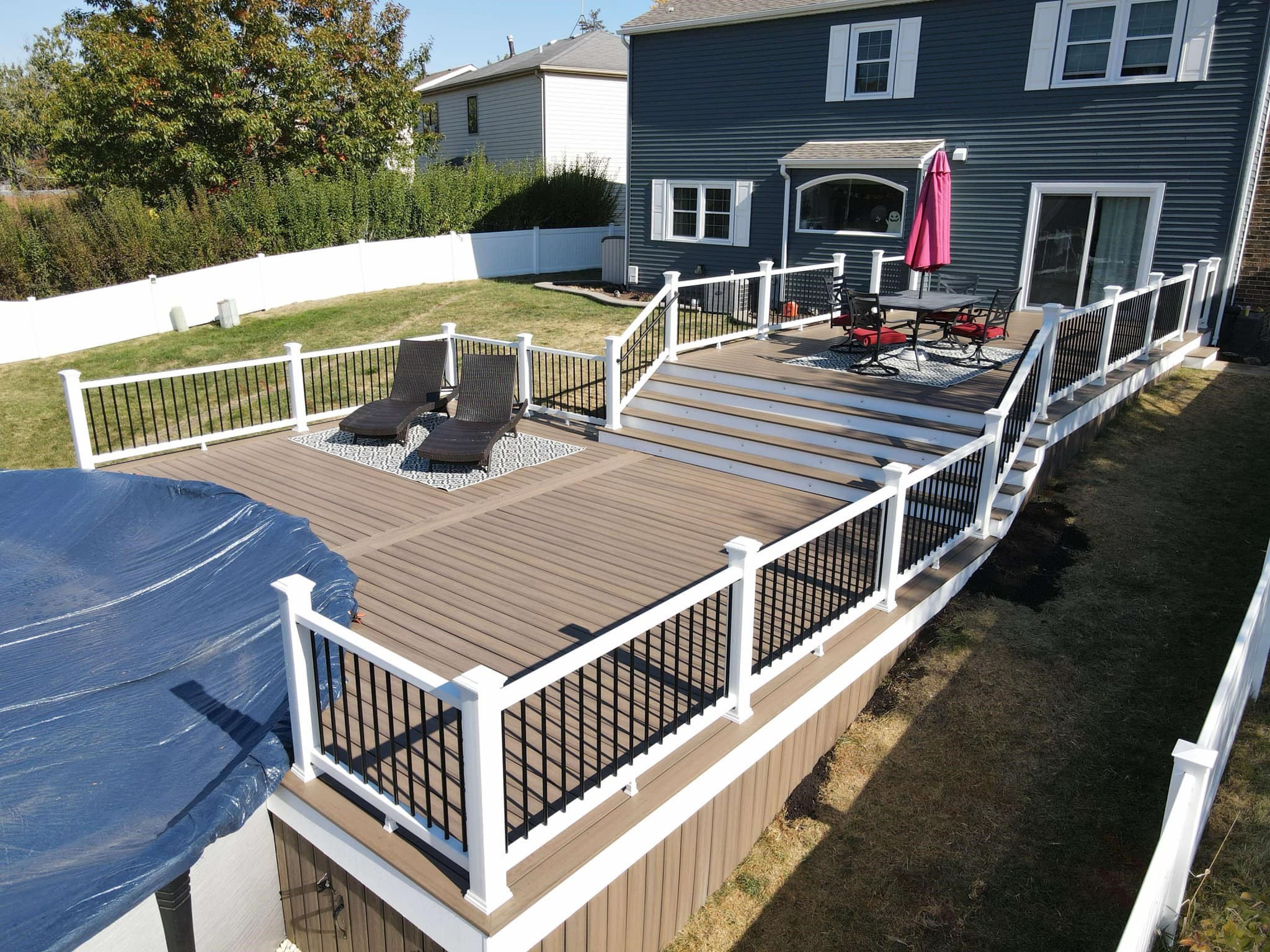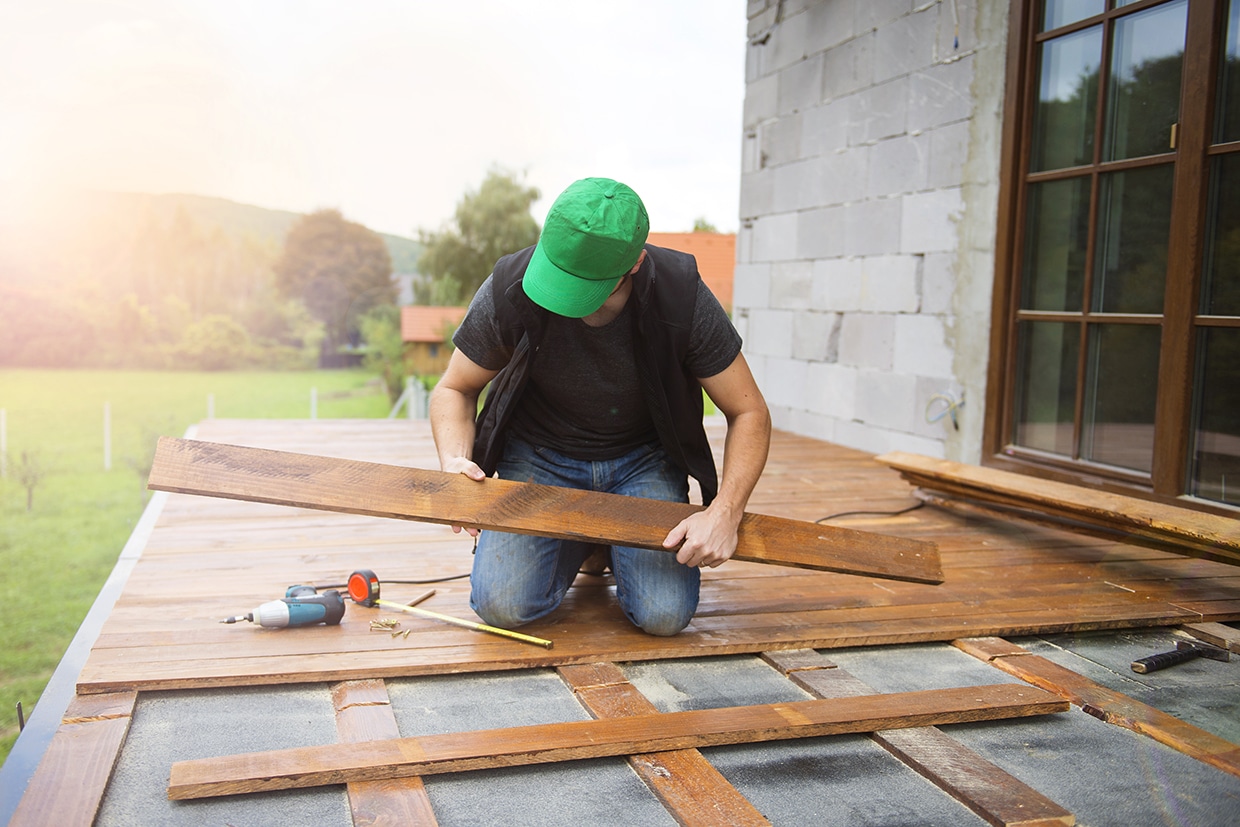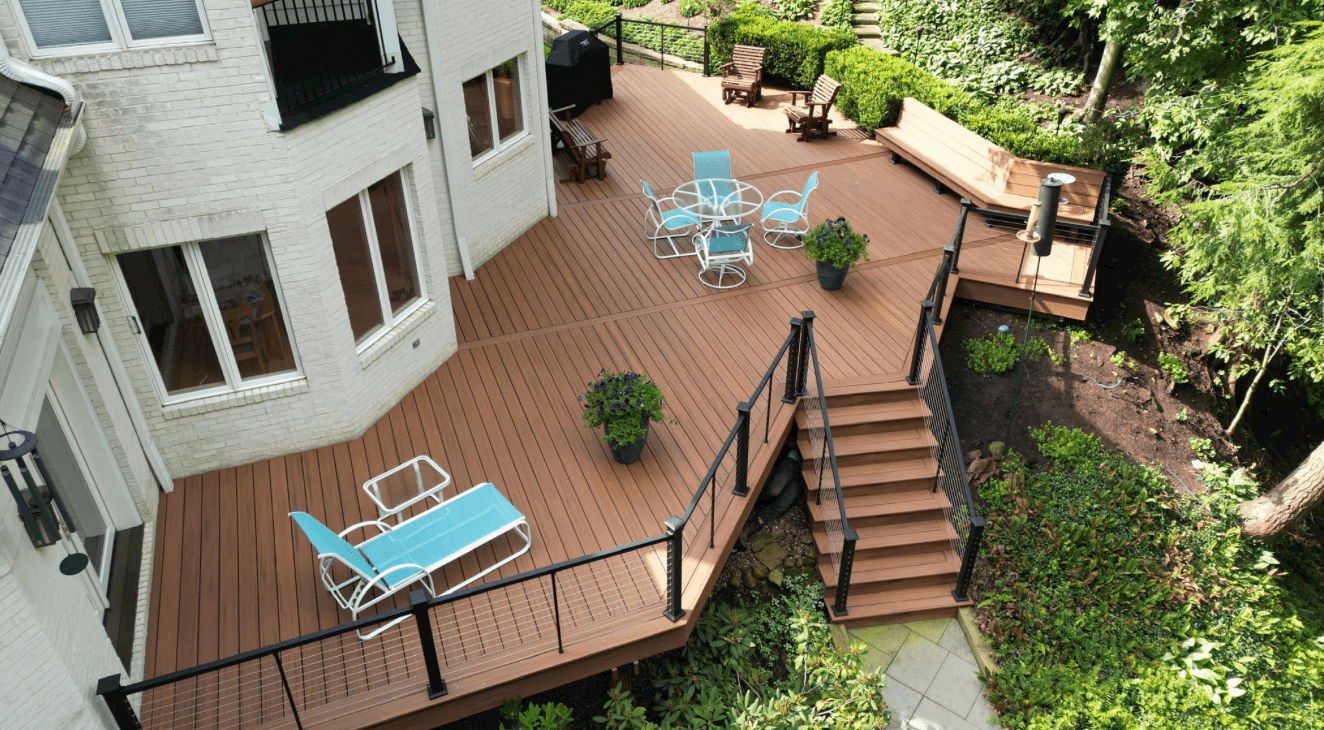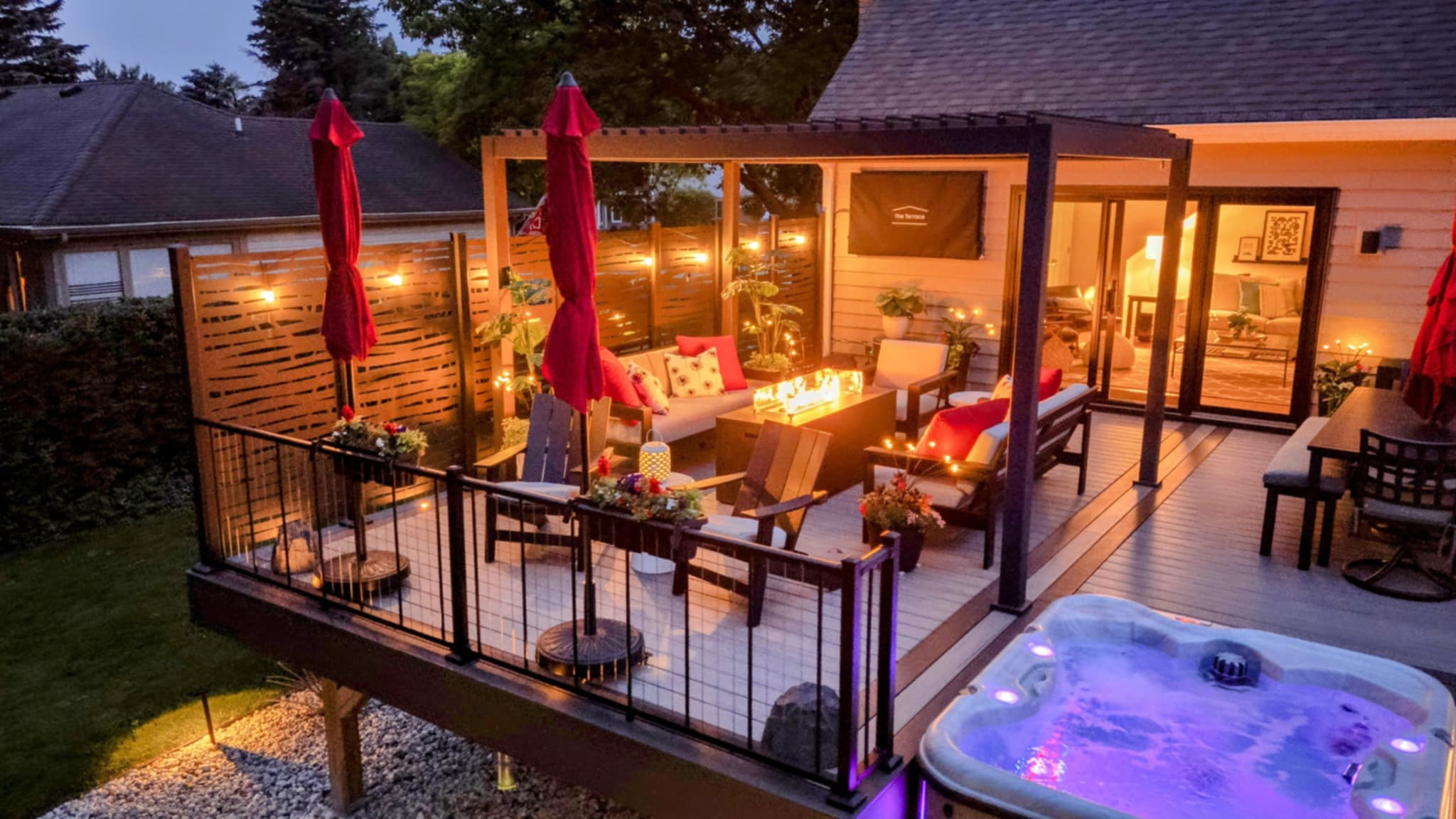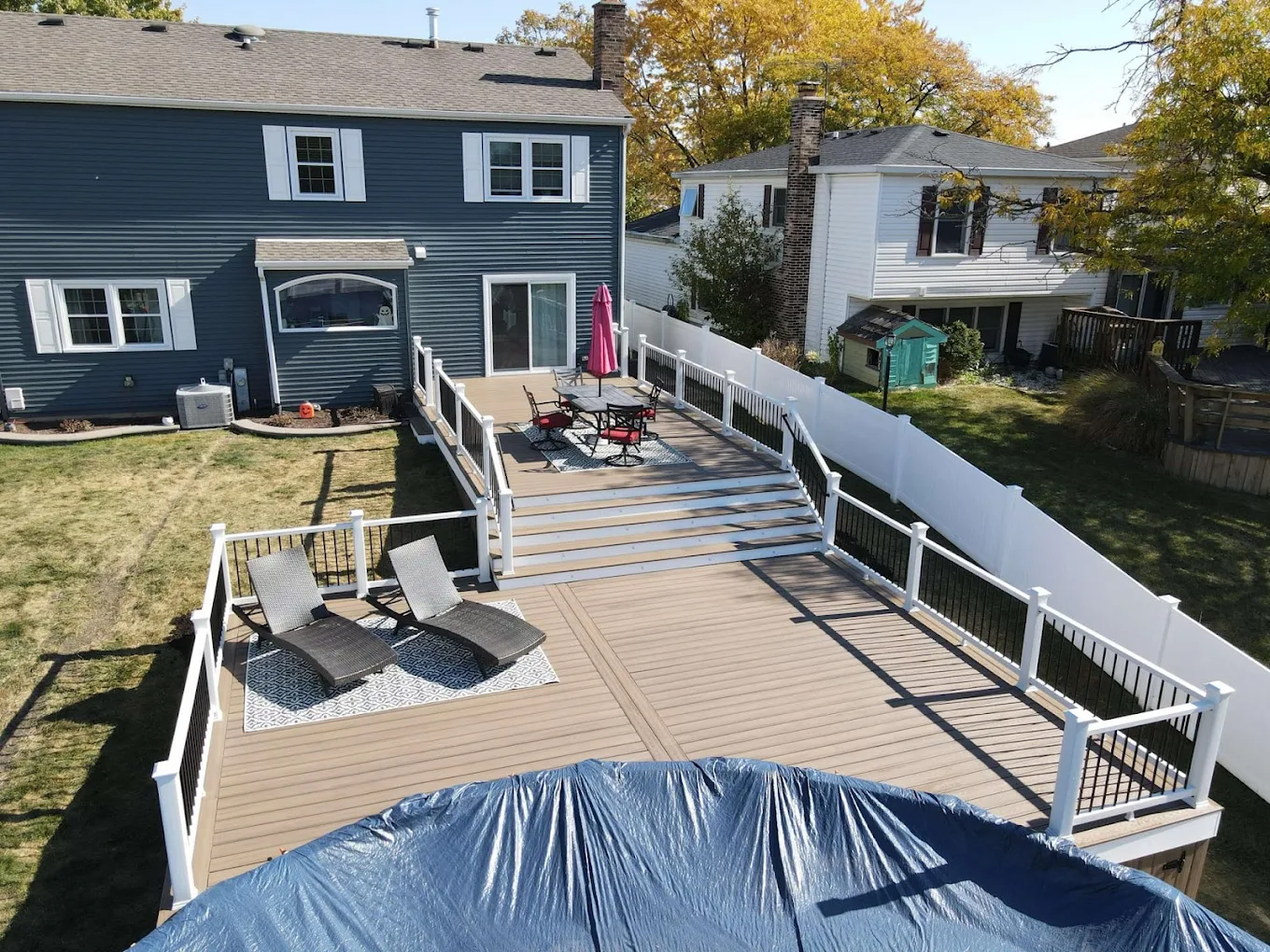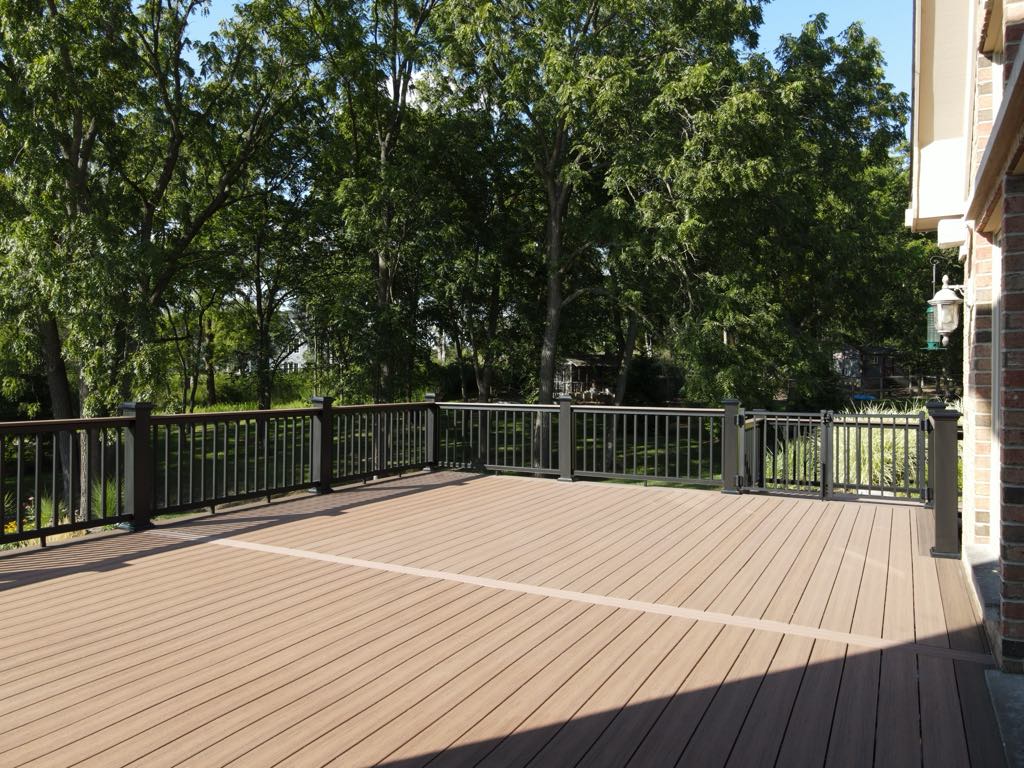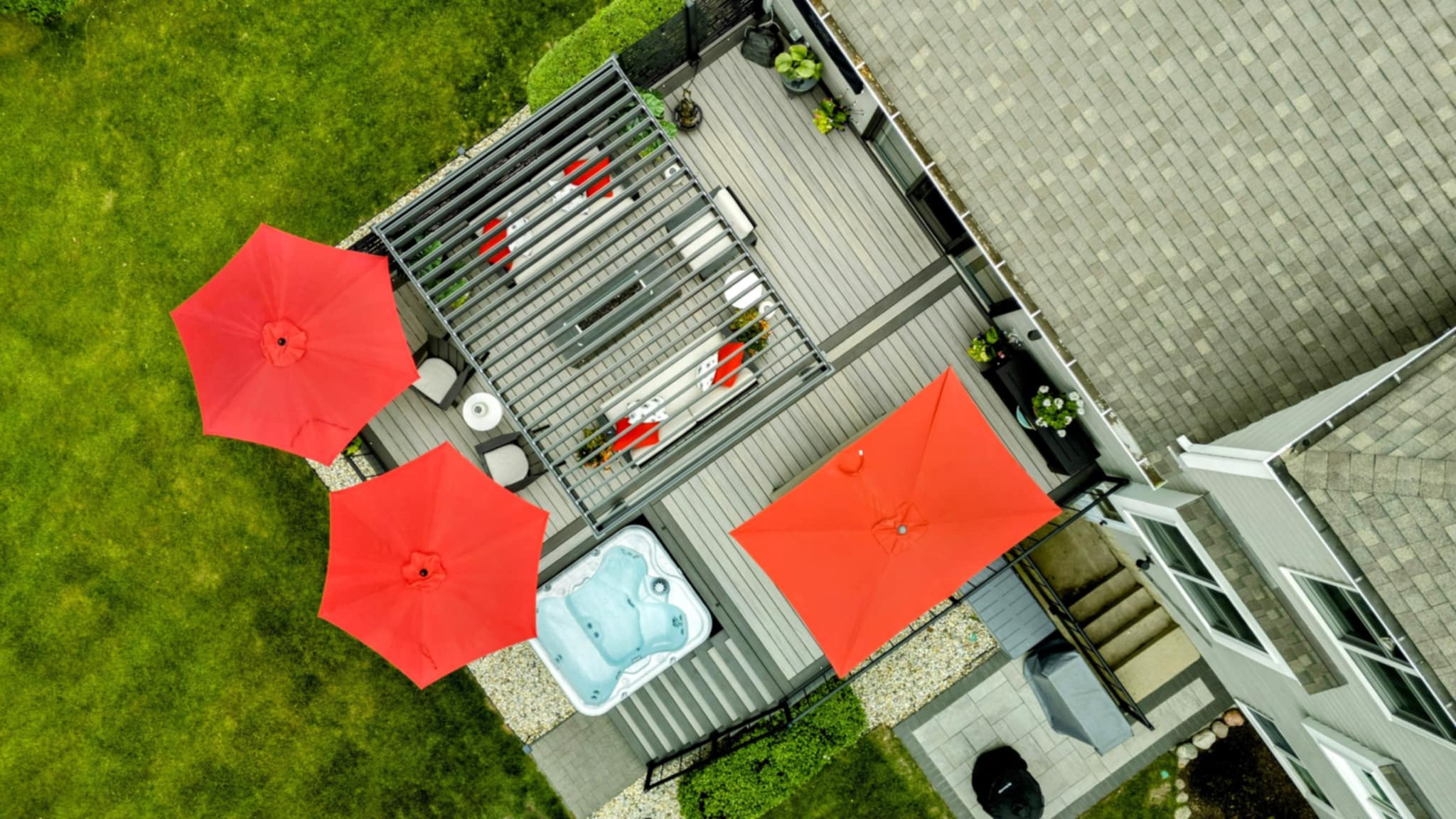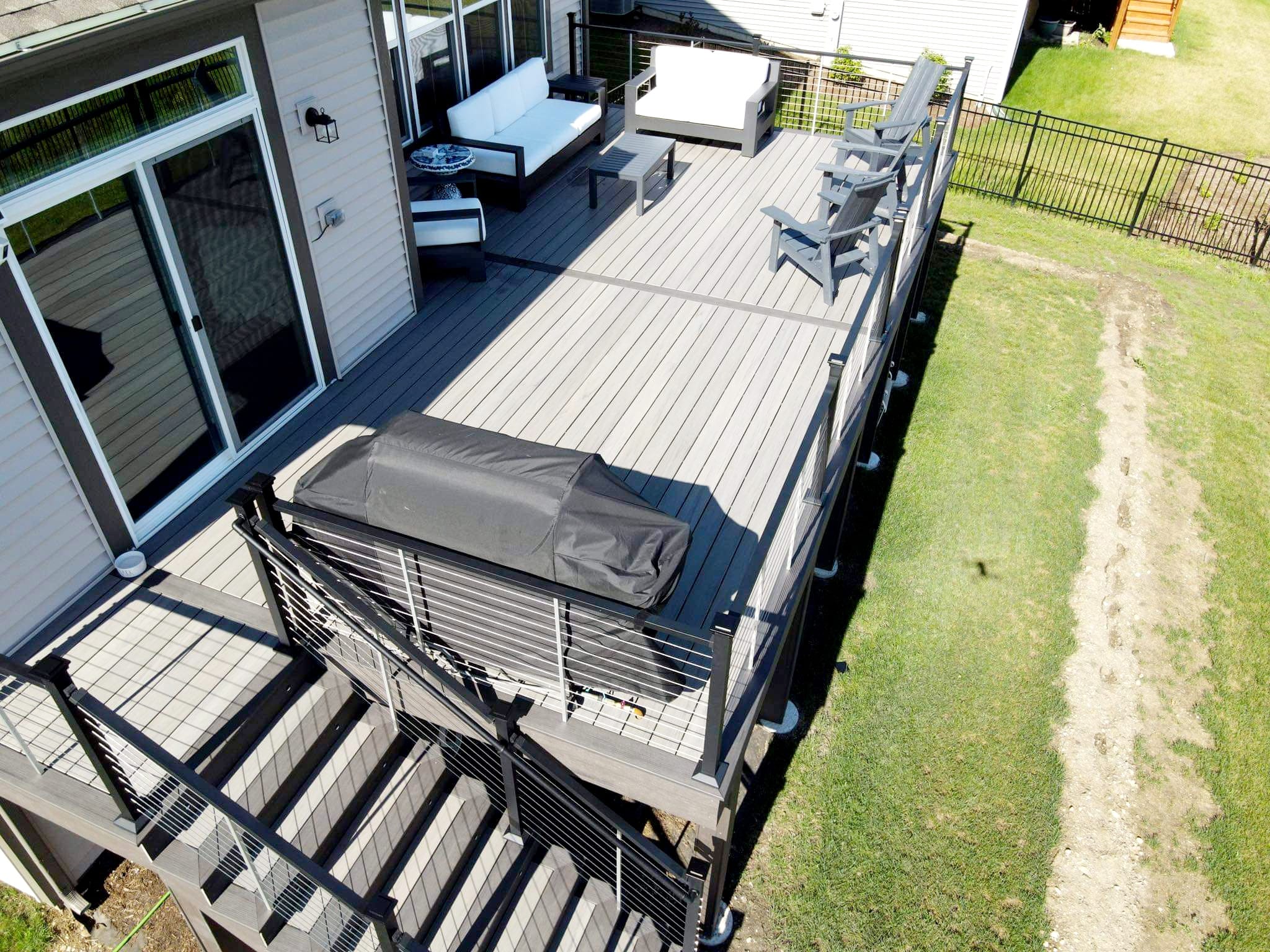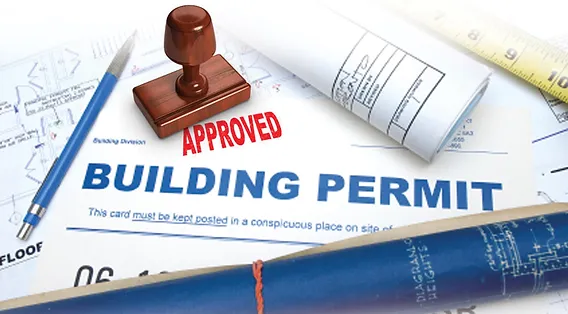Why Composite Decking is Recommended
Whether you own commercial or residential property, you understand the importance of protecting and improving your investment through quality maintenance, additions, and repairs. If you’re considering resurfacing your traditional wooden deck, you may have encountered the suggestion to switch to composite decking. With composite material, you can have the look and feel of a natural wood deck with half the effort.
In this blog, we compare composite decking and wooden deck boards, discuss the benefits of replacing deck boards with composite decks, and why rebuilding deck frames during composite resurfacing helps your deck last longer.
Composite Decking vs Wooden Deck Boards
Traditionally, builders use pressure-treated wooden framing topped with similarly-treated wooden decking boards to build decks. Popular wood types are pressure-treated pine, cedar, or redwood. A traditional wooden deck can last around ten to fifteen years when well-maintained.
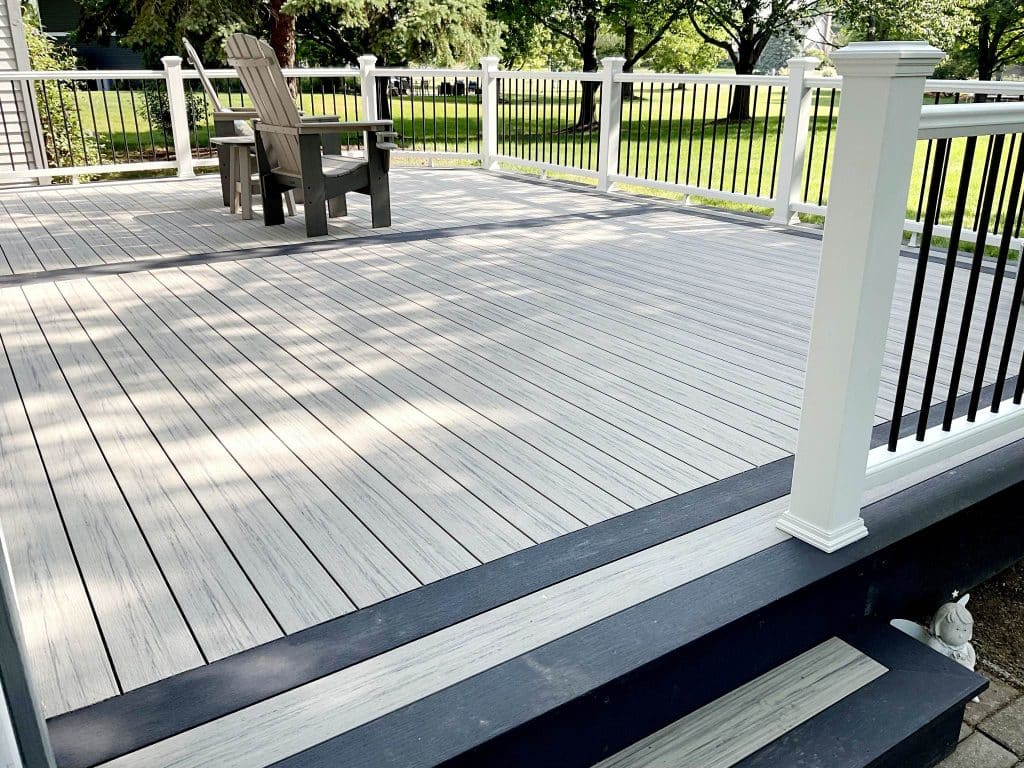
Composite decking, on the other hand, contains a mixture of wood fiber, plastics, and binding agents. The resulting material, considered a wood-plastic composite, is dense and durable, lasting almost twice as long as traditional wood decking material.
Why Rebuilding with Composite Decking Makes Sense
As a property owner, you may feel hesitant about replacing your wooden deck boards with composite decking. However, choosing composite material to resurface your deck can actually save you time, money, and stress.
Improved Durability
First, composite decking stands up to moisture far better than pressure-treated wood, making it less susceptible to rot, mold, and mildew. This improved resistance means that composite decking material can last up to around thirty years when well-maintained.
In addition to its superior weather resistance, composite decking material carries a higher density and weight than natural wood deck boards. This high density means composite boards stand up to dents, dings, and scratches better than natural wood.
Reduced Maintenance Needs
With traditional wooden decks, neglecting the deck surface often results in quick deterioration of the deck boards. Natural wood decks require frequent washing, sanding, and weatherproofing to get the most life out of the wood. These processes take time and professional skills, which costs more money.
Composite decking material requires less upkeep to prevent rot, mold, and mildew from setting in.
Composite decking material also eliminates the need for restaining, meaning your deck will have the same gorgeous appearance for longer.
Eco-Friendly Deck Solutions
Often, manufacturers make composite decking material out of recycled or scrap materials, including discarded wood and plastics. Not only this, these materials last far longer than natural wood, reducing the frequency of the need for new material.
Using and reusing composite materials helps reduce our global dependence on lumber and deforestation.

Easier Design Options
Composite decking material also offers property owners more choice regarding the final look.
While property owners may choose to paint their natural wood decks, these paint jobs often require frequent touch-ups and fresh coats to maintain their brilliant hues. Additionally, color choices may be limited among exterior paint types.
Composite decking, by contrast, comes in various shades to suit any property owner’s tastes. In addition, the color requires very little upkeep and won’t fade over time like some exterior paints.
Improved Safety
Finally, composite decking material reduces the likelihood of chipping, sagging, breaking, and splinters while enjoying time on your property’s deck.
Why Rebuilding Deck Frames for Composite Decks is Important
A high-quality, long-lasting deck offers excellent value and outdoor entertainment opportunities for any property. When resurfacing your deck, you want to get the most out of the process and build a finished product that lasts decades.
That’s why using composite materials makes the most sense, and rebuilding your deck framing during the resurfacing process gives you a significant advantage.
We often receive questions from clients asking us why rebuilding deck framing matters when replacing deck boards with composite boards. In truth, performing this step creates a more structurally-sound final product and helps your deck last longer.

Framing Compatibility
Most contractors don’t build framing for wooden decks that can double as composite deck framing. Thanks to the material’s flexibility, workers must frame composite decking closer together than wooden deck boards. This makes reusing older wooden deck frames hazardous.
Reusing wooden deck frames also often results in butting joists, which results in a messier final look than is otherwise possible.
Improved Longevity of Under-Deck Structures
Finally, wooden deck frames typically last around ten to fifteen years. Reusing a deck frame when replacing deck boards with composite material builds a brand new deck on top of an already aged frame. Eventually, that underlying frame must be replaced, resulting in even more expense.
Rebuilding a deck frame when replacing deck boards with composite materials helps your new deck stay stronger, longer.
Work with Experienced Deck Building Professionals
Don’t risk your personal safety and damaging your property by attempting a DIY deck resurfacing. If you need help replacing deck boards with composite decking, reach out to Decked Out Builders today. Don’t hesitate to call – we’re happy to help.
https://www.google.com/maps?cid=2300364325239903716



